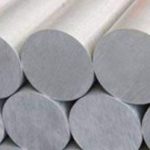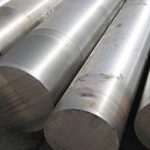Welcome to My Blog!
Before we dive into the content, I’d love for you to join me on my social media platforms where I share more insights, engage with the community, and post updates. Here’s how you can connect with me:
Facebook:https://www.facebook.com/profile.php?id=100087990137347
LinkedIn:https://www.linkedin.com/company/89825762/admin/dashboard/
YouTube:www.youtube.com/@carbonsteelsupply-kj9lw
TikTok:www.tiktok.com/@carbonsteelsupply
Now, let’s get started on our journey together. I hope you find the content here insightful, engaging, and valuable.
Introduction

M50 Tool Steel has gained significant popularity in the aerospace and manufacturing industries due to its exceptional properties and versatility. This high-speed steel is known for its toughness, wear resistance, and ability to withstand high temperatures, making it a preferred choice for many applications. In this comprehensive guide, we will explore the diverse applications of M50 Tool Steel in these industries and delve into its unique characteristics. We’ll also answer frequently asked questions to help you understand why M50 Tool Steel stands out in high-performance environments.
What is M50 Tool Steel?
M50 Tool Steel is a high-performance steel alloy designed for applications requiring toughness, high wear resistance, and the ability to function under extreme conditions. It is primarily used in the aerospace and manufacturing sectors due to its ability to maintain its properties at high temperatures. The main chemical composition of M50 Tool Steel includes chromium, vanadium, molybdenum, and carbon, which contribute to its outstanding mechanical properties.
Key Properties of M50 Tool Steel:
- Hardness: High hardness levels, making it suitable for cutting tools and bearings.
- Toughness: Exceptional toughness that reduces the risk of cracking under stress.
- Wear Resistance: Strong resistance to wear and tear, ideal for demanding environments.
- Heat Resistance: Retains strength and hardness at elevated temperatures.
Applications of M50 Tool Steel in Aerospace
M50 Tool Steel is extensively used in the aerospace industry due to its reliability and strength. Its unique properties make it suitable for several critical components in aircraft and spacecraft, ensuring performance under extreme conditions.
Bearings in Jet Engines
One of the most critical uses of M50 Tool Steel in aerospace is for manufacturing bearings used in jet engines. Bearings must withstand high temperatures, pressures, and rotational speeds. M50 Tool Steel’s ability to retain hardness and resist wear under these conditions makes it an ideal material for this application.
Turbine Blades and Shafts
Turbine blades and shafts are subject to extreme stress and temperature fluctuations. The use of M50 Tool Steel allows these components to maintain their structural integrity and performance, enhancing the overall efficiency of the engine.
Fasteners and Bolts
Fasteners and bolts made from M50 Tool Steel are used in various aircraft assemblies due to their strength and heat resistance. These components play a crucial role in maintaining the safety and reliability of aerospace structures.
Applications of M50 Tool Steel in Manufacturing
M50 Tool Steel is also widely utilized in the manufacturing industry. Its durability and resistance to wear and high temperatures make it suitable for producing tools and components that must endure rigorous conditions.
Cutting Tools and End Mills
M50 Tool Steel is an excellent choice for cutting tools and end mills used in high-speed machining. Its ability to withstand high temperatures ensures that the tools maintain their cutting edge and effectiveness for longer periods.
Precision Bearings
In manufacturing machinery, precision bearings made from M50 Tool Steel are essential for ensuring smooth and efficient operation. The steel’s resistance to wear and tear helps extend the life of these bearings, reducing maintenance costs and downtime.
Punches and Dies
M50 Tool Steel is used to manufacture punches and dies for stamping and forming operations. These tools benefit from the steel’s toughness and wear resistance, allowing them to handle high-impact tasks without deformation.
Heat Treatment of M50 Tool Steel
Heat treatment plays a crucial role in enhancing the properties of M50 Tool Steel. The process involves heating the steel to specific temperatures and then cooling it under controlled conditions to achieve the desired hardness and toughness levels. Below is a table that summarizes the heat treatment process for M50 Tool Steel:
| Heat Treatment Process | Temperature Range | Outcome |
|---|---|---|
| Preheating | 400–500°C (752–932°F) | Preparation for hardening |
| Austenitizing | 1100–1200°C (2012–2192°F) | Hardening and solution treatment |
| Quenching | Room temperature to 200°C | Increases hardness and strength |
| Tempering | 500–600°C (932–1112°F) | Balances hardness and toughness |
This heat treatment process is crucial for ensuring M50 Tool Steel achieves the necessary mechanical properties to perform effectively in aerospace and manufacturing applications.
Advantages of Using M50 Tool Steel
The use of M50 Tool Steel in aerospace and manufacturing offers several advantages:
High Wear Resistance
The steel’s high wear resistance makes it an ideal choice for components that experience repeated friction and stress, such as bearings and cutting tools. This property helps extend the lifespan of these components, reducing the need for frequent replacements.
Excellent Toughness
M50 Tool Steel’s toughness ensures that it can withstand extreme conditions without fracturing or cracking, making it suitable for demanding aerospace environments and high-impact manufacturing processes.
Retains Strength at High Temperatures
M50 Tool Steel is designed to maintain its properties even at elevated temperatures. This feature is essential for components used in jet engines and other high-speed, high-temperature applications where other steels might fail.
Challenges in Working with M50 Tool Steel
Despite its numerous benefits, M50 Tool Steel does present some challenges in manufacturing and machining:
Difficulty in Machining
Due to its hardness, M50 Tool Steel can be difficult to machine. Specialized equipment and techniques are often required to shape and form the steel without compromising its properties.
Cost Considerations
M50 Tool Steel is more expensive than conventional tool steels due to its unique composition and properties. However, its long-term benefits, such as reduced maintenance costs and longer tool life, often outweigh the initial investment.
Complex Heat Treatment
The heat treatment process for M50 Tool Steel is complex and must be carefully controlled to achieve the desired properties. Improper heat treatment can lead to reduced performance or even failure of components.
Future Trends in M50 Tool Steel Applications
The future of M50 Tool Steel in aerospace and manufacturing looks promising as industries continue to demand high-performance materials. The development of new heat treatment techniques and advanced manufacturing processes is expected to enhance the steel’s properties even further, making it suitable for more specialized applications.
Additive Manufacturing
Advancements in additive manufacturing (3D printing) may allow for the production of components using M50 Tool Steel with more intricate designs and optimized properties. This technology could reduce material waste and production time, making it a cost-effective option for aerospace and manufacturing sectors.
Enhanced Coatings
Applying advanced coatings to M50 Tool Steel can further improve its resistance to wear, corrosion, and extreme temperatures. These coatings will expand the steel’s potential applications, especially in environments where additional protection is required.
Conclusion

M50 Tool Steel has established itself as a crucial material in the aerospace and manufacturing industries due to its high performance, toughness, and wear resistance. Its applications range from jet engine bearings to high-speed cutting tools, demonstrating its versatility and reliability. While challenges such as machining difficulty and cost exist, the benefits of M50 Tool Steel make it an invaluable asset in these industries.
FAQ
Q1: What is M50 Tool Steel used for in aerospace?
A1: M50 Tool Steel is used for manufacturing critical components such as bearings, turbine blades, and fasteners that require high strength and heat resistance.
Q2: How does heat treatment affect M50 Tool Steel?
A2: Heat treatment enhances the hardness and toughness of M50 Tool Steel, allowing it to perform effectively under high stress and temperature conditions.
Q3: Is M50 Tool Steel expensive?
A3: Yes, M50 Tool Steel is generally more expensive than conventional steels due to its specialized properties. However, its durability and long-term performance often justify the cost.
This comprehensive overview highlights the importance of M50 Tool Steel in the aerospace and manufacturing industries, emphasizing its applications, benefits, and challenges.

